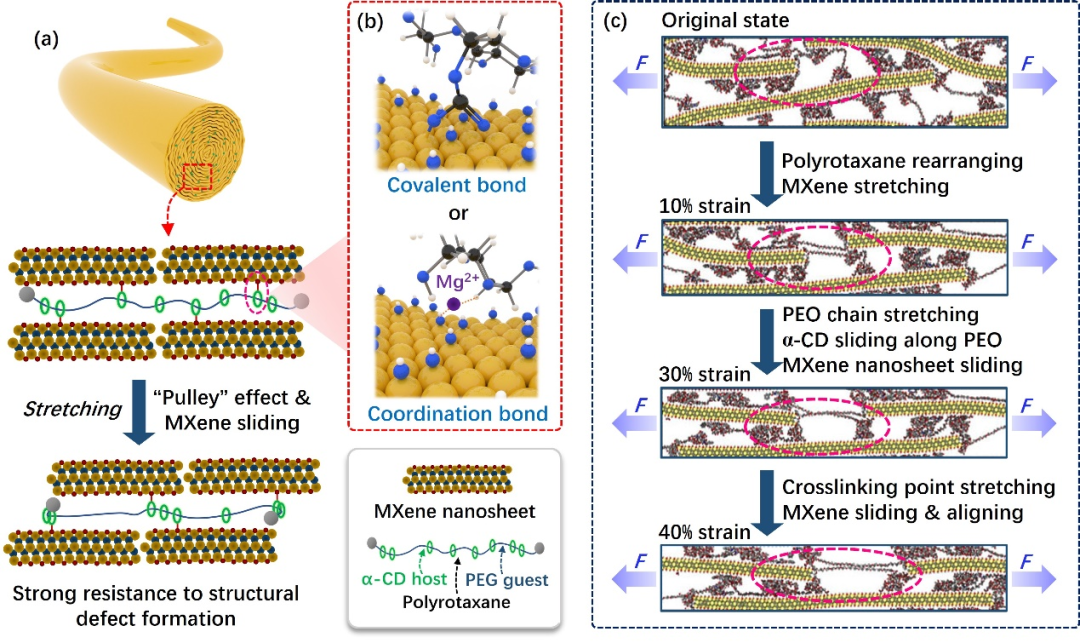
论文题目:Extremely Robust and Multifunctional Nanocomposite Fibers for Strain-Unperturbed Textile Electronics
论文作者:Jianfeng Gu, Fengchao Li, Yinbo Zhu, Donghui Li, Xue Liu, Bao Wu, Heng-An Wu*, Xiangqian Fan, Xinyi Ji, Yongsheng Chen, Jiajie Liang*
发表期刊:Advanced Materials 2023,2209527

Abstract:
Textile electronics are needed that can achieve strain-unaltered performance when they undergo irregular and repeated strain deformation. Such strain-unaltered textile electronics require advanced fibers that simultaneously have high functionalities and extreme robustness as fabric materials. Current synthetic nanocomposite fibers based on inorganic matrix have remarkable functionalities but often suffer from low robustness and poor tolerance against crack formation. Here, we present a design for a high-performance multifunctional nanocomposite fiber that is mechanically and electrically robust, which was realized by crosslinking titanium carbide (MXene) nanosheets with a slide-ring polyrotaxane to form an internal mechanically-interlocked network. This inorganic matrix nanocomposite fiber featured distinct strain-hardening mechanical behavior and exceptional load-bearing capability (toughness approaching 60 MJ m−3 and ductility over 27%). It retained 100% of its ductility after cyclic strain loading. Moreover, the high electrical conductivity (>1.1 × 105 S m−1) and electrochemical performance (>360 F cm−3) of the nanocomposite fiber can be well retained after subjecting the fiber to extensive (>25% strain) and long-term repeated (10 000 cycles) dimensional changes. Such superior robustness allowed for the fabrication of the nanocomposite fibers into various robust wearable devices, such as textile-based electromechanical sensors with strain-unalterable sensing performance and fiber-shaped supercapacitors with invariant electrochemical performance for 10 000 strain loading cycles.
